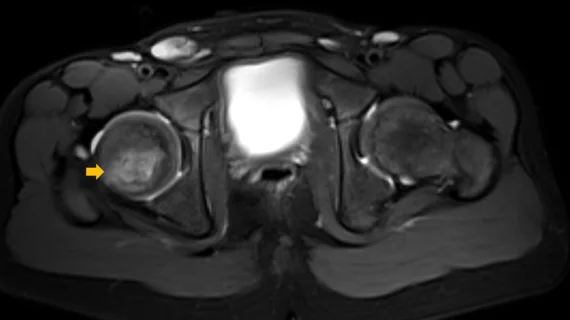Diagnosing osteomyelitis with abbreviated noncontrast MRI protocols
Using abbreviated MRI protocols for pediatric exams offers similar quality as standard protocols but decreases the need for sedation.
In cases of osteomyelitis, these abbreviated noncontrast protocols result in similar interobserver agreement when compared to standard protocols that utilize contrast, according to new data published in Current Problems in Diagnostic Radiology.
Due to the amount of time it takes to complete these scans (around 59 minutes in this study), sedation is commonly used to keep children still during their exam. However, eliminating the need for sedation can reduce pediatric MRI exam times while also decreasing associated risks and expenses, authors of the new study noted.
“When sedation is unavailable critical imaging may be delayed, and this may result in a delay in patient care. Sedation also has its own inherent risks,” corresponding author Ashishkumar K. Parikh, MD, with the Department of Radiology at Children's Healthcare of Atlanta, and colleagues explained.
These risks increase with the level of anesthesia required to sedate children, and imaging exams generally require levels deeper than moderate.
Adjusting protocols to include a few vital MRI sequences could eliminate the need for sedation. However, when osteomyelitis is in question, there is a concern that foregoing contrasted sequences could cause a radiologist to overlook pathology.
For this study, experts retrospectively analyzed 80 pediatric MRI exams for osteomyelitis. Two pediatric radiologists interpreted the exams based on three noncontrast sequences only (long axis T1 without fat saturation, long axis STIR, and axial T2 with fat saturation). Their results were compared to the patients’ radiology reports based on the unabridged contrast-enhanced standard department protocol.
Overall, the two reviewers achieved accuracy of 95% and 89% using just the abbreviated protocol and their interobserver agreement was reported as strong. For diagnosing abscesses, the readers recorded accuracies of 91% and 100%.
The abbreviated protocol is not suitable for all patients, the authors acknowledged. However, reducing the use of gadolinium-based contrast agents without sacrificing the diagnostic quality of an exam does appear to be feasible in many cases, they suggested.
“The ability to perform a noncontrast MRI study for osteomyelitis in approximately 15 minutes or less improves MRI throughput creating more availability of the MRI scanner throughout the day,” the group wrote. “Our purpose in developing this protocol was not to create the most optimal imaging for osteomyelitis, but to create the most practical imaging that is diagnostic.”
The study abstract is available here.

